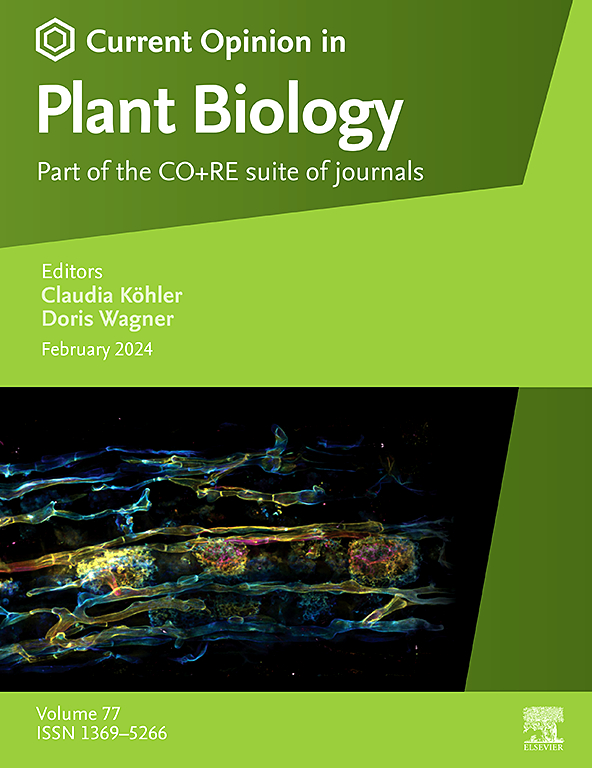苔藓植物的不对称性
IF 7.5
2区 生物学
Q1 PLANT SCIENCES
引用次数: 0
摘要
细胞极性和不对称分裂是植物发育的基础,控制着植物的生长、分化和逆境反应。苔藓的丝状组织为研究这些过程提供了一个很好的系统,因为它们暴露的细胞便于直接观察细胞和细胞内的动力学。本文综述了近年来在植物芽原丝维持和成熟配子体过渡过程中的研究进展,重点介绍了植物芽原丝信号转导、生长素运输和细胞骨架动力学中rho相关gtpase在尖端生长和分裂面定位中的作用。关键调控因子,包括转录辅抑制因子和肽信号成分,协调细胞命运决定和配子体形成。此外,干细胞再生和抗逆性育母细胞的研究提供了去分化和可塑性机制的见解,它们分别涉及细胞极性的重建和破坏。我们目前的知识表明,这些机制共同决定子细胞的身份和发育轨迹,引导它们向特定的组织或器官分化。本文章由计算机程序翻译,如有差异,请以英文原文为准。
Asymmetry in the bryophyte, Physcomitrium patens
Cell polarity and asymmetric division are fundamental to plant development, governing growth, differentiation, and stress responses. The filamentous tissues of the moss Physcomitrium patens provide an excellent system to investigate these processes, as their exposed cells facilitate direct observation of cellular and intracellular dynamics. This review explores recent advances in understanding how P. patens maintains juvenile protonemal filaments and transitions to mature gametophores, highlighting the roles of Rho-related GTPases of plant (ROP signaling, auxin transport, and cytoskeletal dynamics in tip growth and division plane orientation. Key regulators, including transcriptional corepressors and peptide signaling components, orchestrate cell fate determination and gametophore formation. Additionally, the study of stem cell regeneration and stress-resistant brood cells provides insights into dedifferentiation and plasticity mechanisms, which involve the re-establishment and disruption of cell polarity, respectively. Our current knowledge suggests that these mechanisms collectively determine the identity and developmental trajectory of daughter cells, guiding them toward differentiation into a specific tissue or organ.
求助全文
通过发布文献求助,成功后即可免费获取论文全文。
去求助
来源期刊

Current opinion in plant biology
生物-植物科学
CiteScore
16.30
自引率
3.20%
发文量
131
审稿时长
6-12 weeks
期刊介绍:
Current Opinion in Plant Biology builds on Elsevier's reputation for excellence in scientific publishing and long-standing commitment to communicating high quality reproducible research. It is part of the Current Opinion and Research (CO+RE) suite of journals. All CO+RE journals leverage the Current Opinion legacy - of editorial excellence, high-impact, and global reach - to ensure they are a widely read resource that is integral to scientists' workflow.
 求助内容:
求助内容: 应助结果提醒方式:
应助结果提醒方式:


